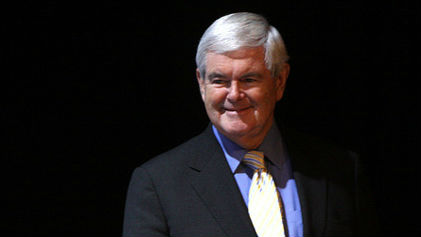Newt’s Lunar Vision: Are Space Colonies a Fantasy?

What’s the Big Idea?
Presidential candidate Newt Gingrich is taking some heat from fellow Republicans due to his proposal to start “a permanent colony on the moon” that would allow us to mine precious minerals. “I think we’ve got other priorities to worry about,” argued Mitt Romney. “I’m for national greatness conservatism, but this is a little too great,” wrote David Brooks in a recent column that dismissed Gingrich as a candidate.
It’s not a bad line of attack for those who would like to portray the former Speaker as a space cadet. And yet, there is merit to this idea.
In a GOP debate in June, the candidates were asked if they would support federal funding for further space exploration. Gingrich is a futurist and advocate of the commercial space industry, but is also highly critical of NASA. He said: “If you take all the money we’ve spent at NASA since we’ve landed at the moon and you applied that money to incentives for the private sector, we would today probably have a permanent station on the moon, three or four permanent stations in space, a new generation of lift vehicles.”
How feasible is this idea of a “permanent station on the moon”? In the 1970s, the experimental physicist Gerard K. O’Neill proposed the development of large scale space habitats that could sustain populations of up to 10,000 people. In the video below, space advocate Peter Diamandis describes how these so-called “O’Neill Colonies” would work.
Watch the video here:
What’s the Significance?
What if we were able to mine the moon for precious resources? I detailed the significance of that idea in a previous post, which quoting Diamandis as saying “there are twenty-trillion-dollar checks up there, waiting to be cashed!” Diamandis was referring to Near-Earth asteroids that contain a wide range of precious resources. That should give you some idea of the value the moon’s resources hold.
Image courtesy of Shutterstock
Follow Daniel Honan on Twitter @Daniel Honan





